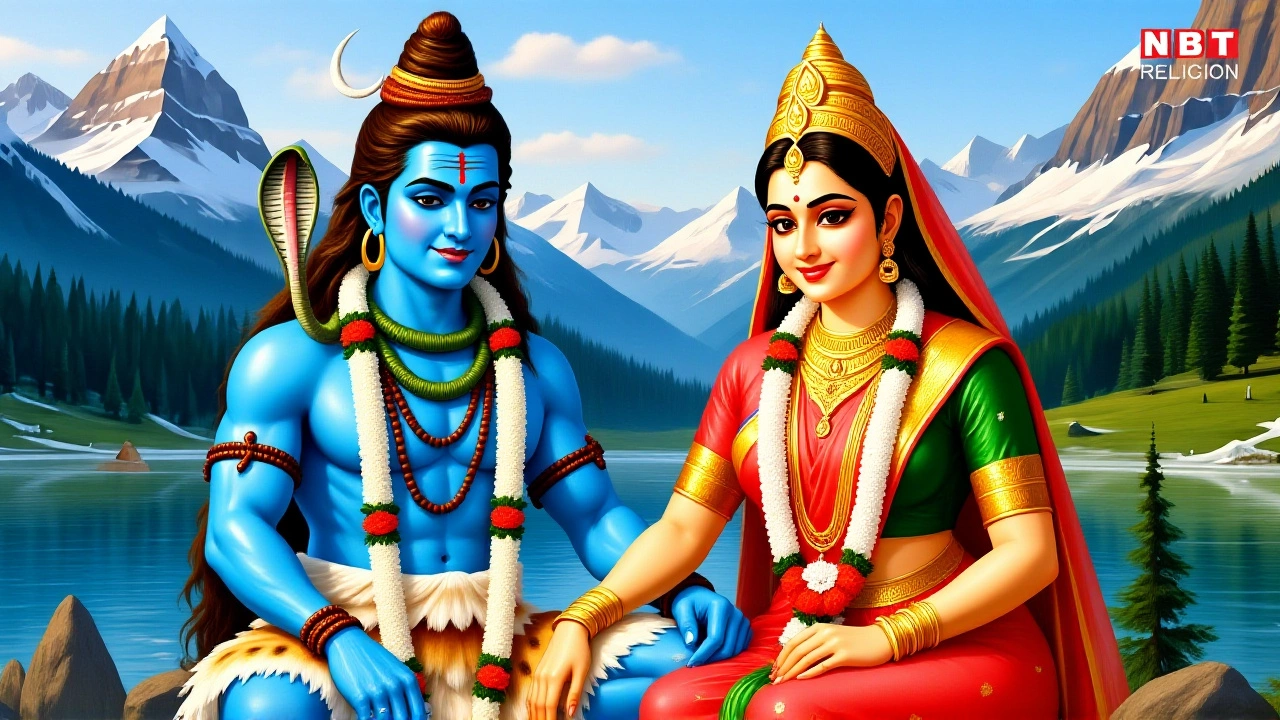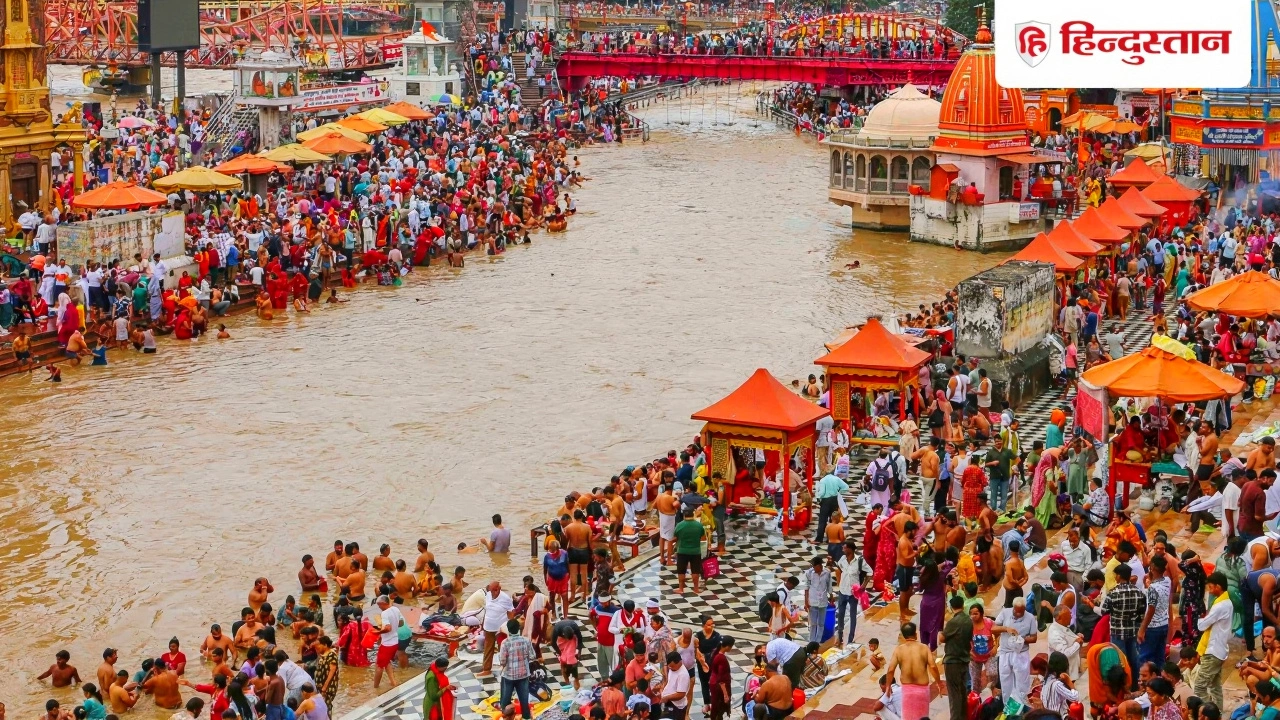On Hariyali Amavasya 2025, millions across India will rise before dawn to offer Bilva leaves and Ganga jal to Lord Shiva, marking a day when the boundary between worlds feels thinnest. The sacred Hariyali Amavasya begins at 2:29 AM on Wednesday, July 24, 2025, in India, and ends just after midnight on the 25th — a 22-hour window of spiritual intensity under the new moon. With sunrise at 5:58 AM and moonrise just before it at 5:03 AM, the day aligns cosmic and earthly rhythms in a way few other Hindu observances do.
The Sacred Timing of a Monsoon Miracle
The Hariyali Amavasya of 2025 is defined not just by date, but by precision: the Amavasya Tithi lasts exactly 22 hours and 12 minutes, according to Drik Panchang, GoodReturns, and The Economic Times. Unlike many festivals tied to sunrise or sunset, this one hinges on lunar phase — a subtle but profound distinction in Vedic astrology. The moon sets precisely at sunset (7:08 PM), meaning devotees won’t see the moon at all — a symbolic reminder that this day is about inner vision, not external sight.
Why does this matter? Because Hariyali Amavasya falls in Sawan, the holiest month for Lord Shiva worshippers. The monsoon rains have just begun, turning fields green — hence “Hariyali,” meaning verdant. But spiritually, it’s more than color. As Puja Home told India TV News, “The veil between the physical and spiritual realms is at its thinnest.” That’s why rituals here carry extra weight.
Rituals That Bind the Living and the Departed
Before sunrise, devotees bathe in rivers — the Ganges, Yamuna, or even home water mixed with Ganga jal. Then comes the offering: Bilva leaves, milk, water, and flowers at Shiva temples nationwide. The Maha Mrityunjaya Mantra is chanted not just for protection, but for liberation — a prayer to transcend death’s cycle. Many also perform Pitru Tarpan, offering water and black sesame seeds to ancestors, believing their spirits are closer now.
In Chhattisgarh, where it’s a state holiday as Hareli Tihar, farmers tie green branches to their tools and cattle, thanking the earth for renewal. In Maharashtra, it’s Gatari Amavasya; in Karnataka, Bheemana Amavasya — each name carries a local legend, but all point to the same truth: this is a day of gratitude, not just to gods, but to lineage.
And then there’s the numerology. Rishabh A Grover, a noted numerologist, points out that 24/07/2025 adds up to 22 — a “master number” in numerology associated with spiritual foundation and manifesting divine purpose. “It’s not luck,” he says. “It’s a karmic reset button.”
Radha Krishna and the Hidden Devotion
While Shiva dominates the rituals, Lord Krishna isn’t forgotten. Devotees flock to the Banke Bihari Temple in Vrindavan, especially to the famed Phool Bungalow, where flowers are offered in abundance. The Dwarkadhish Temple in Dwarka also sees a surge in pilgrims. The Times of India notes this isn’t contradictory — Shiva and Krishna represent complementary forces: destruction and grace, austerity and love. On this day, both are honored.

What Happens After the Rituals?
Donations are central. Clothes, food, and essentials are given to the poor — not as charity, but as spiritual currency. Brahmins receive special meals, their blessings believed to amplify the day’s merit. The Ganeshaspeaks team calls it “the quietest festival of the year” — no fireworks, no crowds, just whispered prayers and steady hands pouring water into copper bowls.
And yet, the impact ripples. In villages, farmers mark the day by planting saplings. In cities, yoga centers host all-night meditation sessions. The Hariyali Amavasya isn’t just a ritual — it’s a reset for the soul, timed with the earth’s renewal.
Why This Day Isn’t a National Holiday — And Why That Matters
Despite its scale, Hariyali Amavasya isn’t a public holiday in most of India. Only Chhattisgarh recognizes it officially. That’s telling. It suggests this isn’t about state control or public spectacle — it’s personal. You don’t need a day off to light a lamp for your ancestors. You need silence. You need intention. You need to wake up at 2:29 AM, when the world is still asleep, and remember: we are part of something older than calendars.
Frequently Asked Questions
Why is Hariyali Amavasya linked to Lord Shiva and not other deities?
Lord Shiva is worshipped during Sawan because he’s believed to have consumed the poison Halahala during the churning of the ocean, saving creation — a sacrifice tied to renewal. The monsoon, which brings life back to the land, mirrors this act of divine protection. Devotees offer Bilva leaves, which are said to be Shiva’s favorite, and milk to cool his fiery nature. The timing of Amavasya — the darkest night — symbolizes the dissolution of ego, aligning with Shiva’s role as the destroyer of illusion.
What’s the significance of the 22-hour Amavasya window?
The 22-hour span means the tithi crosses two calendar days, making the observance flexible. Devotees can perform rituals anytime between 2:29 AM on July 24 and 12:41 AM on July 25. This allows for regional variations — those in remote areas with limited access to temples can still observe the day fully. It also reflects the Vedic view that time is cyclical, not linear. The spiritual energy remains active throughout, not confined to a single sunrise.
How does this festival differ from other Amavasyas like Mahalaya Amavasya?
Unlike Mahalaya Amavasya, which focuses solely on ancestral rites during the Pitru Paksha period, Hariyali Amavasya blends devotion to ancestors with worship of Shiva and Krishna. It’s also tied to nature’s renewal — the monsoon’s greenery — making it uniquely holistic. While Mahalaya is somber, Hariyali is hopeful. The offerings here include food for the living, not just the dead, emphasizing community and regeneration.
Why do some regions call it by different names like Gatari or Bheemana Amavasya?
These names reflect local folklore and agricultural cycles. In Maharashtra, Gatari Amavasya is linked to the ritual of cleaning and repairing farming tools. In Karnataka, Bheemana Amavasya honors Bheema, symbolizing strength and endurance — qualities needed to survive the monsoon’s challenges. The variations show how deeply Hinduism adapts to regional life, turning a lunar event into a living tradition shaped by soil, season, and story.
Is there any scientific basis for the belief that the veil between worlds is thinner on this day?
While science doesn’t confirm metaphysical veils, the new moon’s gravitational pull does influence Earth’s water bodies — including the human body, which is 60% water. Some researchers suggest lunar phases affect sleep cycles and emotional states. In a culture that observes nature’s rhythms, this may explain why the day feels spiritually potent. The real power lies in collective intention: when millions focus on reflection, gratitude, and release, the psychological and communal impact is undeniable.
What should someone do if they can’t visit a temple on this day?
You don’t need a temple. Wake before dawn, bathe with Ganga jal if possible, light a candle, and offer water with a few Bilva leaves on a clean surface. Chant the Maha Mrityunjaya Mantra three times. Light incense, sit quietly, and remember your ancestors. Donate food or clothes to someone in need. The essence isn’t location — it’s awareness. The divine is present wherever intention is pure.
